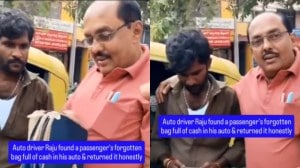State of distress
A combination of populism used with reckless abandon and economic shortsightedness has driven the state towards bankruptcy.
A combination of populism used with reckless abandon and economic shortsightedness has driven the state towards bankruptcy. In 1980-81,West Bengal produced 9.8 per cent of the industrial output produced in India; in 2009-10,it was only 4.32 per cent. Employment in the organised sector came down from 10.84 lakh to 5.72 lakh during the period. The culture of gheraos and strikes fuelled by power shortage gradually drove industry and capital away from this state,just as the intense politicisation of its once-famed academic institutions drove its talents away.
This decay continues unabated,signs of which had earlier metamorphosed into social and political turmoil. The state polity became dominated by violence and its governance by corruption. West Bengal became a party state that allowed no dissent,turning it into a vast instrument of coercion caught in a time warp where the clock of progress and flow of ideas almost came to a standstill. Finances were in a shambles with the state struggling to pay the salaries of its huge army of staff. Its growth plummeted and debt burden rose steeply.
The total outstanding debt liabilities of the state has mounted from a manageable level of Rs 1,441 crore or 20 per cent of the state income (GSDP) in 1977-78 to an astounding level of Rs 175,366 crore or 37 per cent of its GSDP at the end of 2010-11,rising annually by 15.66 per cent since 1977. The annual interest burden on this huge debt has increased from a modest Rs 73 crore to Rs 13,817 crore over this period. Almost two-thirds of the states own revenues are spent towards meeting the interest charges alone. But the sorry fact is that the state failed to use the debt resources for creating income generating capital assets,but used it almost wholly to repay the past debt and interest. Consequently,capital outlay in the state remained one of the lowest in the country. Even Bihar had a capital outlay almost four times that of West Bengal in 2010-11.
Other states also faced the debt problem,but they introduced fiscal discipline by enacting the Fiscal Responsibility and Budget Management Act (FRBMA) at the prodding of the Twelfth Finance Commission and,by reducing their revenue deficit side by side,managed to lighten their debt burden. But by refusing to enact the FRBMA till July 2010,West Bengal had forgone a debt relief amounting to Rs 2,735 crore during 2005-10. Almost 88 per cent of its outstanding debt is due to its internal market borrowings,more than half of it commanding interest rates exceeding 10.5 per cent,of which a substantial part will mature in the next seven years. The debt service payments will therefore continue to grow exponentially,bringing an already bankrupt state to the verge of collapse. By all accepted parameters,this level of debt is clearly unsustainable.
The net resource gap in the economy is reflected by the Gross Fiscal Deficit (GFD),which for West Bengal has increased from Rs 189 crore in 1977-78 to Rs 19,534 crore in 2010-11,among the highest in the country. In respect of almost all fiscal and financial parameters,West Bengal today has slipped below most states.
To bail it out,the Centre had doled out a package of Rs 21,614 crore in August 2011,including a market loan component which will further add to its debt liabilities. Another grant of Rs 18,908 crore was approved this year. But in a federal set-up,with competing demands from different states,it is very difficult to accommodate a particular state beyond a limit. The state finance minister,who is yet to present a budget,is clueless. Yes,he has inherited an annual liability of Rs 40,000 crore on account of debt,but he can still try to curtail revenue expenditure,expand the tax base and put a stop to populist subsidies and doles the state still indulges in. Half of the 72 state PSUs are in the red and the past nine months have not seen any concrete action towards the industrial revival promised in Trinamool manifesto. Investments need more than populist promises to come to the state.
(The author is Director General of International Centre for Information Systems and Audit. He earlier had a stint in West Bengal as the Principal CAG)


- 01
- 02
- 03
- 04
- 05





























